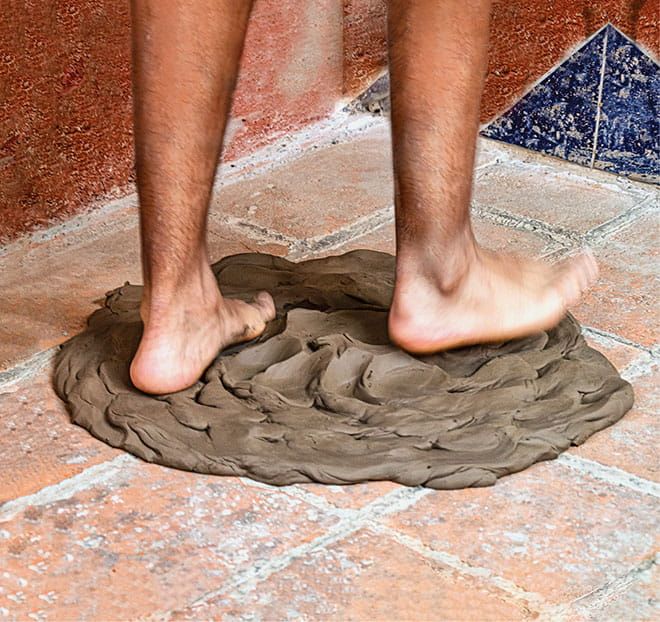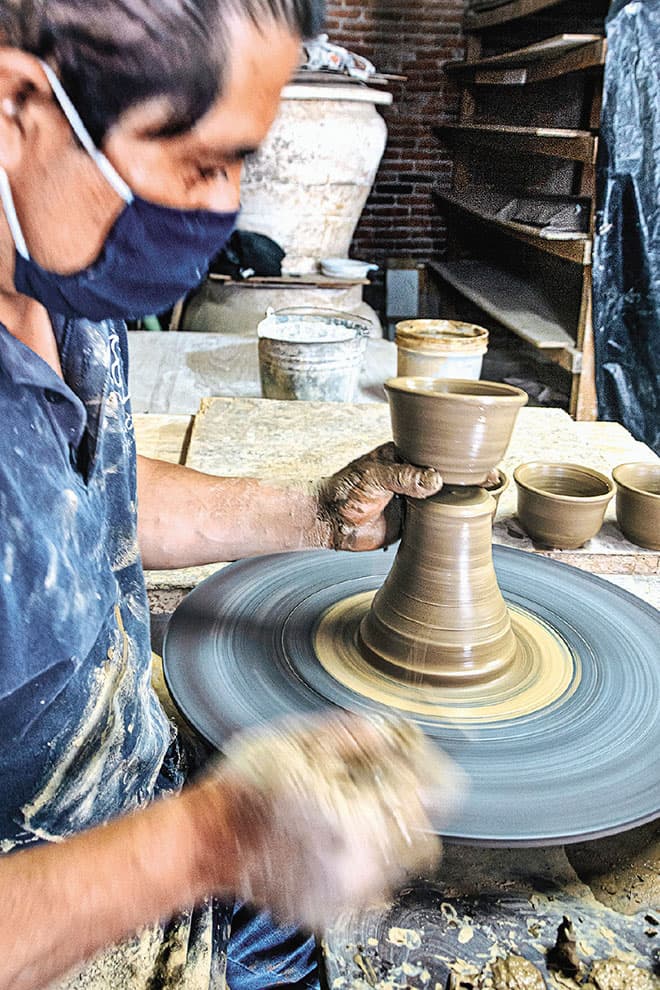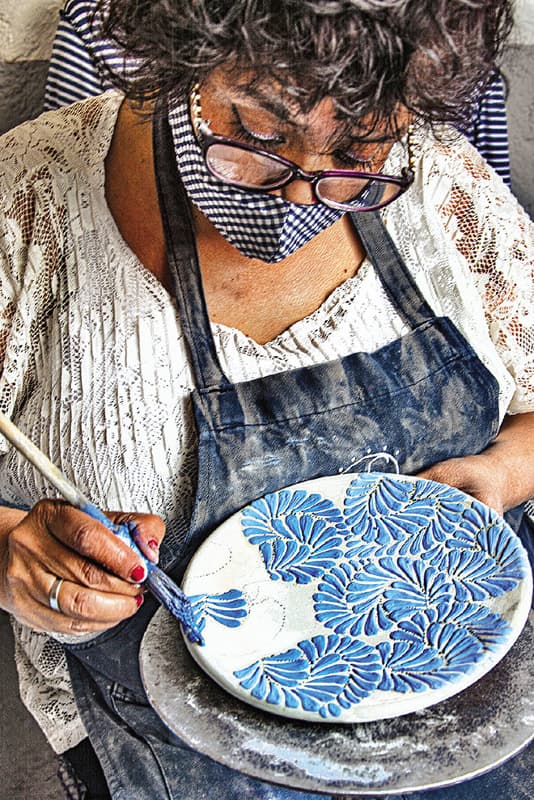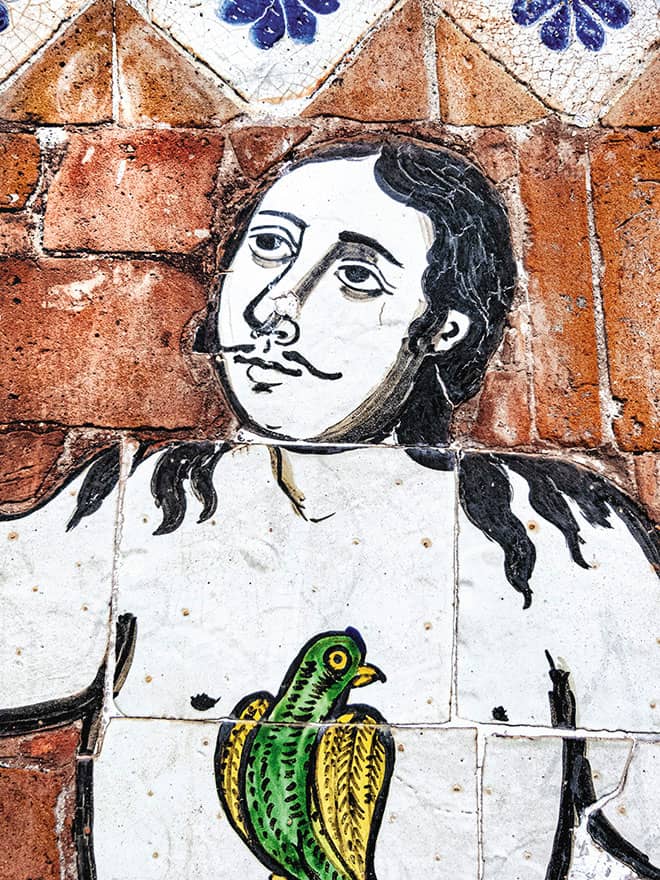Handcrafted Talavera Pottery of Puebla-Tlaxcala, Mexico
The outstanding handcrafted pottery known since at least the 18th century as Talavera is made in the Puebla-Tlaxcala region and is admired as an icon of Mexico for its delicate workmanship, high quality, brightness, colorfulness, and great beauty.

In the Puebla-Tlaxcala region, the outstanding handcrafted pottery known since at least the 18th century as Talavera, whose tradition and fame date back to the 16th century, has come to be admired as an icon of Mexico for its delicate manufacture, high quality, brilliance, colorful, great beauty, and for faithfully keeping in its realization the production techniques used during the colonial period, introduced to the viceroyalty of New Spain by the Spanish potters, which today is the pride of Mexico and Intangible Cultural Heritage of Humanity.
After the conquest, potters from Talavera and Andalusia migrated to New Spain; many of them settled in Puebla de los Angeles and began the production of ceramics using the technique of stanniferous earthenware to meet the needs of the population.
In the beginning, the elaboration of these pieces was not easy, because although the pre-Hispanic cultures had good pottery, they did not know this technique. The Spanish potters had to look for the raw materials required for their production, import those not available in New Spain, as well as experiment with different ingredients until they obtained good quality pieces.
Fortunately, they found abundant banks of clay and sand in the surroundings of Puebla de los Ángeles and were able to acquire and produce the raw material necessary for the production of "white earthenware" (the term used to designate this type of pottery during most of the viceregal period) and found favorable conditions that contributed to the development and improvement of its production.
The origins of Talavera were made in Puebla's potteries
The production of Talavera pieces underwent significant development, reaching its splendor in the 17th and 18th centuries, to the point of producing utilitarian ware, decorative pieces, sculptures, and a large number of tiles. Since the 16th century, Talavera pieces were made in Puebla's potteries, which supplied orders even for various New Spain cities and, in time, also for export abroad.
The potters joined together to form a guild to protect their trade and implement mutual aid among its members, which was officially established when the ordinances, drawn up by their representatives in 1653, were approved in 1659 by the Duke of Alburquerque, Viceroy of New Spain, and proclaimed in Puebla de los Angeles in 1676, being these the norms that govern the technology used in the elaboration of stanniferous earthenware in that city, which could only be elaborated in the workshops of the examined masters belonging to the guild.
According to these ordinances, the guild's locerías were authorized to manufacture three types of pieces: common (also known as entrefina or inter-fine), fine (including that known as refina or refined), and yellow, the latter being the most common and not considered to be Talavera as it was of a lower quality than the other two. The aforementioned ordinances underwent certain additions and modifications between 1682 and 1762. Many of their sections refer to technical and decorative aspects in the manufacture of Talavera ware, measures that were followed during the colonial period.
With Mexico's independence, the guilds were abolished, however, stanniferous ceramics continued to be produced in workshops, and the secrets of the technique were kept and transmitted from generation to generation of potters, and difficulties were faced due to anti-Spanish sentiment and the preference of society to acquire and consume imported porcelain manufactured industrially. At the end of the 19th century and the first decades of the 20th century, there was an upturn in the production of this type of earthenware, surviving during that century up to the present day.
The potters have kept and transmitted through oral tradition the knowledge and technical secrets of the trade. The first thing that is known about the manufacturing processes is due to the research carried out by Luis Enrique Ventosa, a Catalan potter who promoted the production of Talavera in Puebla in the late 19th and early 20th centuries, preserving colonial designs and mixing them with Mexican motifs.

The traditional Talavera manufacturing process
The processes of handcrafting Talavera pieces have changed little up to the present day, using millenary techniques lacking the use of industrial methods, which consist of a long, arduous and laborious work full of technical difficulties that the artisans have to solve day by day and in whose pieces they leave a mark of their great love for such production.
The process begins with the acquisition of two different muds in the region of Puebla-Tlaxcala, one black and one white, which are crushed and cleaned of impurities, mixed, and put to rot or stink in tanks with water for at least two months before being used, a process carried out to hydrate them, to obtain a plastic and malleable clay of good quality.
After that time, to be able to use the clay, the potter takes out the mixture and places it on brick floors to eliminate the excess humidity, at the same time he starts with the long process of kneading known as repisar because it is done with the feet: he walks on the clay with his bare feet until he obtains a uniform mass of good consistency.
The kneading is finished by hand, forming blocks called "stems", from which the quantity required to make the different pieces is obtained. These can be of various types and sizes, of simple or elaborate shapes, sumptuary objects, sculptures, and tiles. They are formed on the lathe or with molds.
In the first case, the required portion of clay is placed on the lathe, a rotating table that the skilled artisan pushes with his feet, while with his wet fingers, with great skill, he molds, lengthens, sinks, thins or expands the clay to obtain the desired object. For the molded pieces, the clay is deposited in molds so that it is well distributed and is left to dry; then it is removed from them.
Once the pieces are obtained by either of the two techniques, they are left to dry for a long period (from one to six months, depending on the size) in rooms without ventilation so that the loss of humidity is uniform and they are protected from air currents. There they remain until they are completely dry; then they are placed in the kiln to be fired for about eight hours at temperatures reaching 800˚C. The pieces thus worked present an orange color and are called "jahuete".
They are rinsed, washed and, when they are perfectly dry, they can be decorated. To do this, a milky varnish or enamel must be applied to them, which is made in the same workshop using complex methods that begin by amalgamating lead and tin to obtain the "alarca" in a direct fire furnace called "padilla". Next, the alarca is ground together with the grit; then the mixture is placed in a vat and stirred with water, thus forming the enamel.
As can be seen, the first two metals and silicon are the main ingredients of this coating glaze, the latter being what gives each piece its glaze, the whitish color, and the characteristic shine of Talavera. It should be noted that the maximum content of these substances is established in the Mexican Official Standard NOM-132-SCFI 1998 ( Talavera Elaboration Processes, n.d.).
More details of the Talavera manufacturing
Depending on the size and type of piece, the glazing of the objects of jahuete is done, either by immersion or by dripping. Afterward, to prevent them from sticking to the drying racks, the base of each piece is cleaned and they are left to dry for a few days until they are ready for the next process.
In the workshop, for the decoration of the pieces, the clay workers make their brushes of different thicknesses, and with diverse minerals they prepare the traditional colors that they use for the decoration of the pieces, being these the fat blue, fine blue, green, yellow, orange and black, whose opaque and pasty appearance at that moment differs from the tonality of the brilliant color that they will have after the second firing.
There are two ways to decorate the pieces: the first is used for unique designs by free brushstroke, using the technique of plumeado (feathering) and borroneado (erasing) established in the colonial ordinances. The second is used when a pattern is to be repeated in several pieces, for example in tableware, which requires a stencil, stenciling and then outlining the drawing in black, and then applying the colors in turn, without limiting creativity to replicate designs.
In both cases the decoration is painted by hand, applying the color to the dry glaze of each piece. The decoration is a delicate task and requires great skill, in which there can be no mistakes because once the color is applied it cannot be erased; trying to patch up the mistake would ruin the piece.
Once the pieces are decorated, they are left to dry and then subjected to the second firing in a high-temperature kiln, at about 1,000˚C, for a minimum space of ten hours; afterward, to prevent the thermal shock from breaking the ceramic objects, the kiln is left to cool for about five hours before opening it and proceeding to remove the various pieces, being able to admire the final result of the talaveras.
The arduous, long and laborious process of elaboration of Talavera pieces, from the plastering to the obtaining of the final product, requires a minimum time of approximately six months, in which the preparation of the clay, the glaze, the colors, the elaboration of each piece, its decoration, as well as the handling of the kiln, require knowledge, skill, and experience related to the ancestral cultural practice, being a traditional iconic craft that has been preserved from generation to generation.

The elaboration process has changed little from the viceroyalty period to the present day; some aspects have been perfected, but the traditional artisanal processes have been maintained. Among the changes are the elimination of tricots to separate the pieces during firing and in some workshops the introduction of electric lathes (although these limit the potter by having a constant speed), and the substitution of wood-burning ovens for gas ovens, with which temperatures can be controlled and regulated.
The standards regulating the production
The type of production and the decoration used in its elaboration make each piece of Talavera unique and unrepeatable, despite being made by the same hands. Due to the accelerated emergence of a wide variety of imitations of Puebla's Talavera in the decoration of pottery made both in Mexico and abroad, passing them off as the real thing, when in fact they are low-quality ceramic objects whose manufacture uses commercial materials, especially industrially processed paints without the artisan's involvement in their production, as well as lower-cost industrial procedures.
In the 1990s, the houses and workshops of Puebla, attached to the creation of pieces using traditional techniques, began a struggle to defend and preserve the reliable artisan production of ceramic pieces of Talavera in an ancestral way, based on the colonial ordinances of the potters of Puebla de los Angeles.
In 1995 they managed to obtain the declaration of the Talavera Zone, which includes the Puebla municipalities of Atlixco, Cholula, Puebla, and Tecali, geographical locations where authentic Talavera is produced, and where the raw materials for its products mainly come from.
A few years later, in 2003, the municipality of San Pablo del Monte, Tlaxcala, was included, all areas recognized by the Mexican Institute of Industrial Property as responsible for the production, protection, and sale of certified Talavera.
The association of these houses and workshops saw their efforts come to fruition on September 11, 1997, the date on which the Official Journal of the Federation published the declaration of protection of origin of Talavera for ceramics produced using the methods and technique of traditional viceregal stanniferous earthenware.
With the help of the Faculty of Chemical Sciences of the Benemérita Universidad Autónoma de Puebla, the standards regulating production were drawn up, and in 1998 the Official Mexican Talavera Standard NOM 132-SCFI-1998 was obtained, issued by the then Ministry of Commerce and Industrial Development, which establishes the guidelines for the production and quality of this craft, protects the principles for the production of Talavera pieces and establishes:
[...] it must be 100% handmade ceramics made with traditional materials and craft techniques, and with the commitment of the Federal Government to the preservation of this heritage, a body is entrusted with the monitoring and evaluation of the official standard.
On December 1, 1998, the Consejo Regulador de Talavera, A.C. (Talavera Regulatory Council) was created. -approved by the Mexican Accreditation Entity and the General Directorate of Standards on June 1, 1999, to regulate, monitor, and certify compliance with the aforementioned standard.
This council, similar to the 17th-century guild of potters, had the purpose of regulating compliance with the tests required by standard 132 to prevent, mainly, mass production and the pouring of liquid clay into molds. And to promote the manufacture of pieces using the Talavera technique, which is in danger of extinction.

Denomination of Origin
To achieve its objective, the Council periodically evaluates the workshops producing this craft, submitting their pieces to laboratory analysis and, if the results comply with the regulations, it issues a certificate of authenticity to the workshops and houses producing Talavera, which bears the acronym DO4 -which stands for Denomination of Origin-, valid for one year, which it renews if they continue to comply with the production process established for the aforementioned ceramics in Rule 132. It should be noted that the appellation of origin is:
[...] a recognition granted by the Mexican State to products originating in a specific geographic region and whose quality is due to that region. [...] is the ratification of the elements and conditions that guarantee the production of an indigenous product [in this case talavera pottery], unique in the world and with a long history and tradition.
To guarantee the veracity of a piece of Talavera and avoid any copy, each piece is required to bear the seal or logo of the artisan workshop or production house, as well as a hologram issued by the Council itself, which must be attached to each ceramic object as a distinctive mark certifying its authenticity.
In December 2019, UNESCO, through the Intergovernmental Committee for the Safeguarding of the Intangible Cultural Heritage, in Bogota, Colombia, inscribed the "Artisanal processes for the elaboration of Talavera of Puebla and Tlaxcala, Mexico, and the ceramics of Talavera of the Reina and Puente del Arzobispo, Spain", in the Representative List of the Intangible Cultural Heritage of Humanity, for considering that its manual elaboration is based on and is the result of traditional knowledge based on the way of making this pottery in the 16th century, transmitted from generation to generation, which remains in force to this day in these communities, identifying them as part of their heritage and identity.
Each workshop has its own identity that is manifested in specific details of the modeling, ornamentation, colors, and glazes of the pieces. The handmade manufacture of this particular type of ceramic is an essential symbol of identity in Mexico and Spain.
The distinction awarded by UNESCO, for being a millenary technique:
[...] is an opportunity to protect living practices, expressions, and production processes and, above all, the traditional knowledge related to talavera [...] [to value it] and eradicate misappropriations, prevent this knowledge from being distorted and advance in the protection of Collective Rights.
The aim is to prevent the Puebla-Tlaxcala region from the artisanal Talavera manufacturing extinction.
Source: Author Velázquez Thierry L. Los procesos artesanales para la elaboración de talavera de Puebla y Tlaxcala en México. Elementos 122 (2021) 13-19




